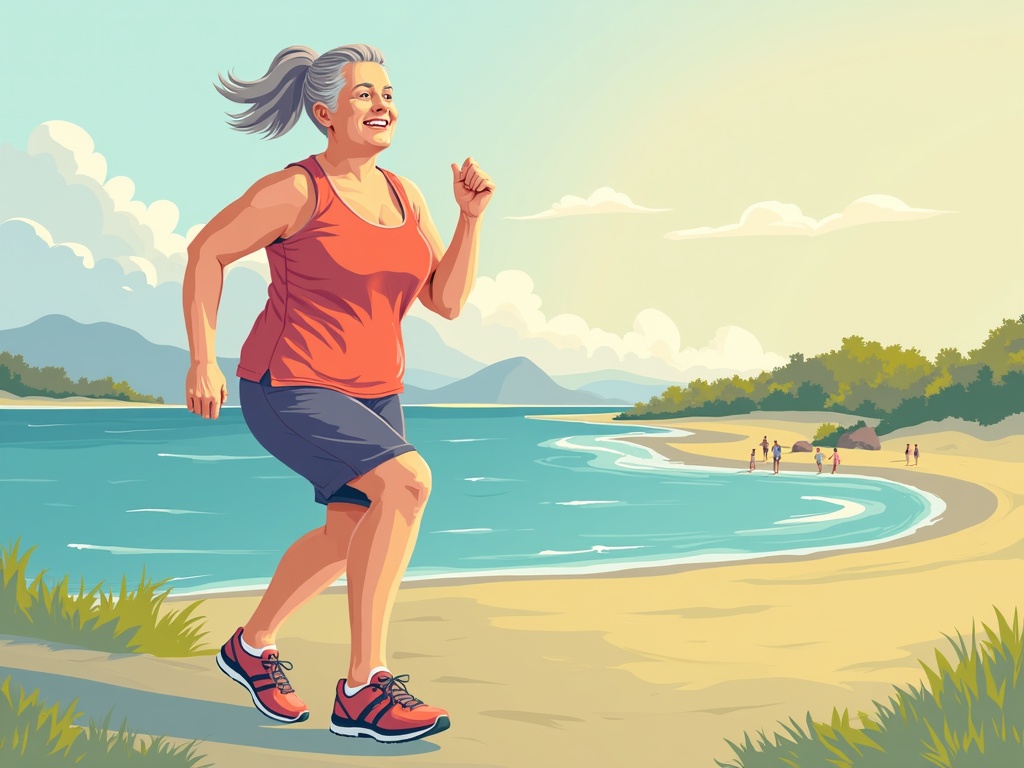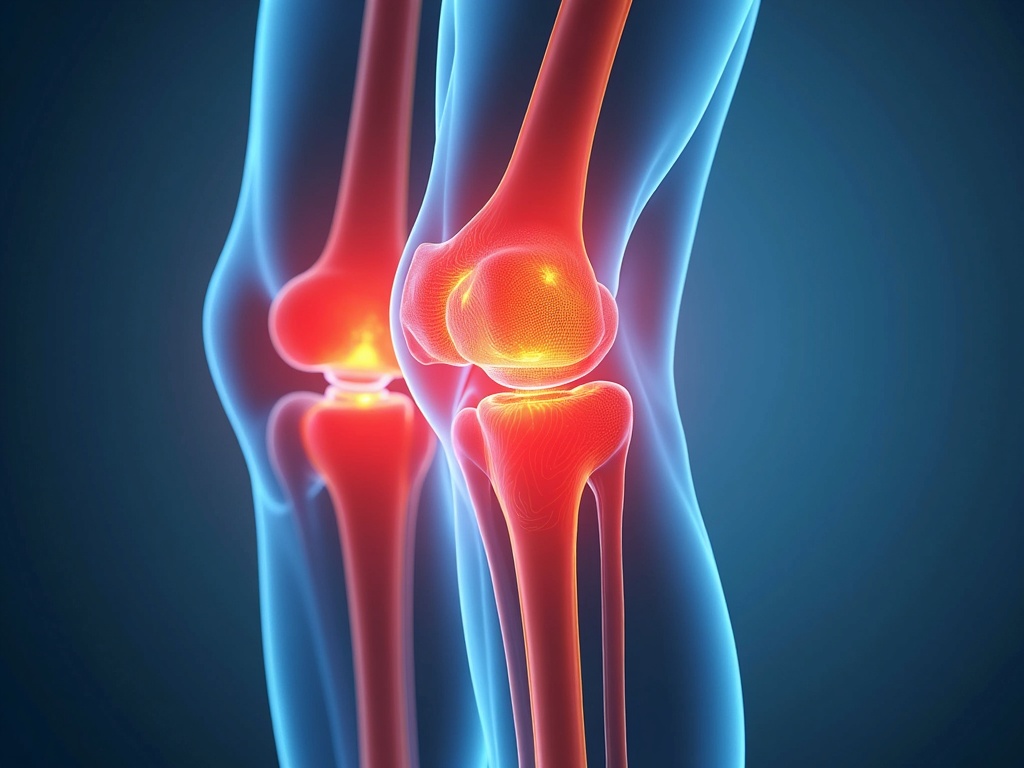Joint Protection Habits for Middle Age: Staying Active and Pain-Free
Remember effortlessly bounding up the stairs, or waking up without a single ache? As we glide – or sometimes stumble – into middle age, our joints often start whispering (or sometimes shouting!) complaints. But don't resign yourself to a life of creaky knees and stiff fingers. By adopting proactive joint protection habits, you can significantly reduce pain, maintain mobility, and continue enjoying an active, fulfilling life.
Understanding the Changes in Middle Age Joints
Our joints are intricate systems, designed for movement and support. They consist of bones, cartilage, ligaments, tendons, and synovial fluid, all working together. As we age, several factors contribute to joint discomfort:
- Cartilage Thinning: The protective cartilage that cushions our joints can thin over time, leading to bone-on-bone friction.
- Decreased Synovial Fluid: The lubricating synovial fluid may diminish, reducing joint smoothness.
- Muscle Weakness: Muscles surrounding the joints provide crucial support. Age-related muscle loss (sarcopenia) can destabilize joints, increasing strain.
- Ligament Laxity: Ligaments, which connect bones, can become less elastic and more prone to injury.
- Inflammation: Chronic low-grade inflammation, common in middle age, can exacerbate joint pain and stiffness.
These changes don't automatically condemn you to a life of pain. Understanding them empowers you to take preventative action.
Smart Movement Strategies: Protecting Your Joints in Daily Life
How you move throughout the day significantly impacts your joint health. Small adjustments can make a big difference:
Lifting with Your Legs, Not Your Back
This is a golden rule for a reason. When lifting objects, bend at your knees and hips, keeping your back straight. Hold the object close to your body, and avoid twisting while lifting. Engage your core muscles for added support.
Maintaining Good Posture
Slouching puts undue stress on your spine, hips, and knees. Be mindful of your posture while sitting, standing, and walking. Imagine a string pulling you up from the crown of your head. Use ergonomic chairs and supportive cushions when needed.
Varying Your Activities
Repetitive movements can overload specific joints. Alternate between different activities to distribute stress evenly. If you spend hours typing, take frequent breaks to stretch your wrists and fingers. If you love running, incorporate lower-impact activities like swimming or cycling into your routine.
Using Assistive Devices
Don't hesitate to use tools that can ease strain on your joints. Reachers can help you grab items from high shelves, jar openers can make opening lids easier, and shoehorns can reduce bending. Consider using a cane or walking stick for added stability if needed. Assistive devices are not a sign of weakness, but of wisdom! They allow you to stay active and independent.
Exercise Essentials: Strengthening and Stabilizing Your Joints
Regular exercise is vital for joint health, but it's crucial to choose the right types and intensity. Focus on exercises that strengthen the muscles around your joints and improve flexibility.
Low-Impact Cardio
Activities like walking, swimming, cycling, and elliptical training are gentle on your joints while providing excellent cardiovascular benefits. Aim for at least 30 minutes of moderate-intensity cardio most days of the week.
Strength Training
Strengthening the muscles around your joints provides crucial support and stability. Focus on exercises that target the major muscle groups, including your legs, core, back, and shoulders. Use light weights or resistance bands, and gradually increase the intensity as you get stronger. Examples include squats (modified as needed), lunges, push-ups (against a wall or on your knees), rows, and planks
Flexibility Exercises
Stretching improves range of motion and reduces stiffness. Incorporate daily stretching into your routine, focusing on major muscle groups and joints. Hold each stretch for 20-30 seconds.
Listen to Your Body
Pain is a signal that something is wrong. Don't push through pain. Modify your exercises or take a break when needed. If pain persists, consult with a physical therapist or doctor.
The Power of a Joint-Friendly Diet
What you eat can significantly impact inflammation and joint health. Focus on a balanced diet rich in anti-inflammatory foods:
Omega-3 Fatty Acids
Found in fatty fish (salmon, tuna, mackerel), flaxseeds, and walnuts, omega-3s have potent anti-inflammatory properties.
Antioxidants
Fruits and vegetables, especially berries, leafy greens, and colorful peppers, are packed with antioxidants that protect against cell damage and reduce inflammation.
Healthy Fats
Olive oil, avocados, and nuts provide healthy fats that support joint health.
Stay Hydrated
Water helps lubricate joints and maintain cartilage health. Aim for at least eight glasses of water per day.
Foods to Limit or Avoid
Processed foods, sugary drinks, red meat, and excessive alcohol can promote inflammation and exacerbate joint pain.
Weight Management: Easing the Load on Your Joints
Excess weight puts significant stress on weight-bearing joints like your knees and hips. Even a modest weight loss can dramatically reduce joint pain and improve mobility. Combine a healthy diet with regular exercise to achieve and maintain a healthy weight.
Prioritizing Rest and Recovery
Our bodies need time to recover and repair. Aim for 7-9 hours of quality sleep per night. Establish a relaxing bedtime routine to promote restful sleep. Listen to your body and take rest days when needed. Overtraining can lead to injuries and exacerbate joint pain.
Seeking Professional Guidance
If you're experiencing persistent joint pain or stiffness, consult with a doctor, physical therapist, or other healthcare professional. They can diagnose the underlying cause of your pain and recommend appropriate treatment options. Don't suffer in silence – seeking help is a sign of strength!
Creating a Joint-Friendly Environment
Your home environment can also impact your joint health. Consider the following modifications:
- Ergonomic Workstation: Adjust your chair, desk, and computer monitor to promote good posture and reduce strain on your neck, back, and wrists.
- Supportive Footwear: Wear shoes that provide good arch support and cushioning. Avoid high heels or flat shoes that offer little support.
- Non-Slip Surfaces: Use non-slip mats in bathrooms and kitchens to prevent falls.
- Easy-to-Grip Handles: Replace doorknobs with levers and install grab bars in bathrooms to make it easier to get around.
Mindfulness and Pain Management
Chronic pain can take a toll on your mental and emotional well-being. Mindfulness techniques, such as meditation and deep breathing exercises, can help you manage pain and improve your overall quality of life. Learn to focus on the present moment and accept your pain without judgment.
The Long Game: Consistency is Key
Protecting your joints is not a one-time fix, but an ongoing commitment to a healthy lifestyle. By adopting these joint protection habits, you can proactively manage your joint health, reduce pain, maintain mobility, and continue enjoying an active and fulfilling life for years to come. Small changes, consistently applied, make a world of difference.


